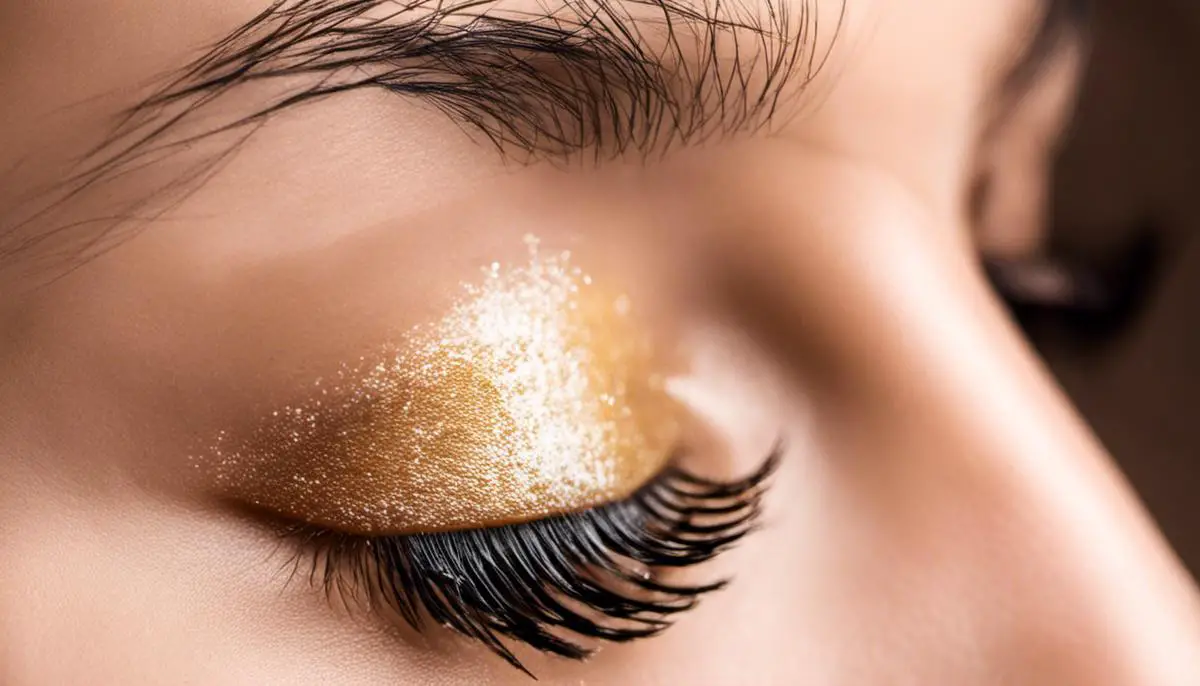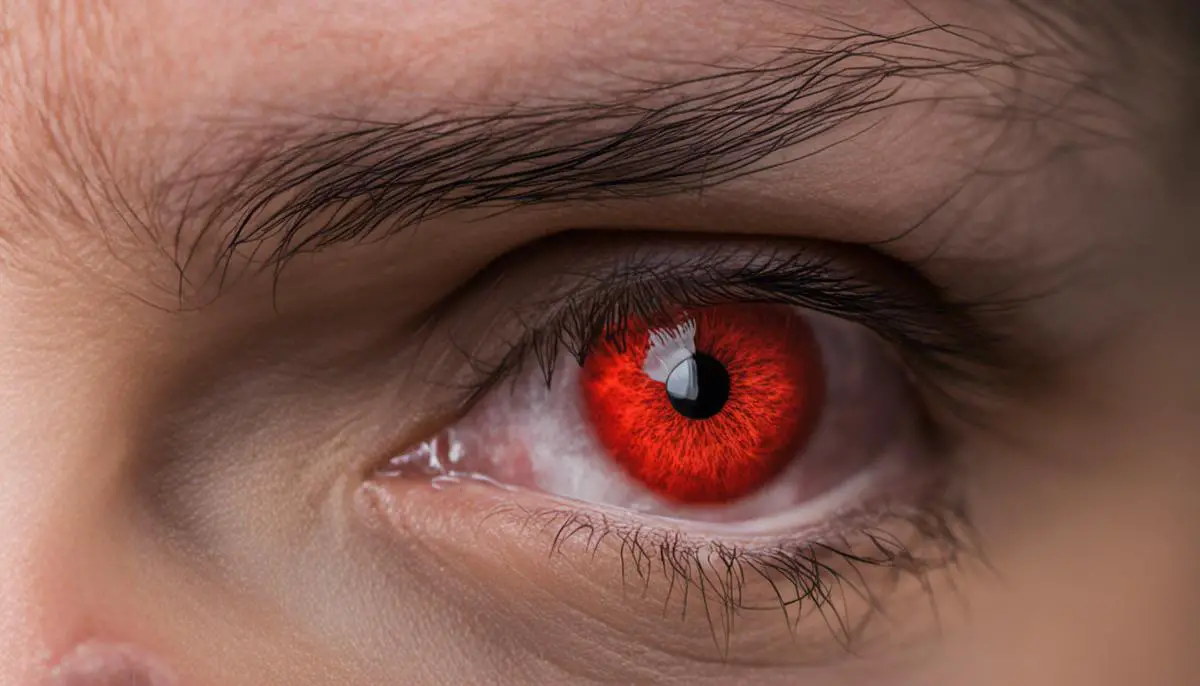In our quest to live healthier lives, the natural remedy approach has offered a wealth of treatment options for various conditions, one of them being blepharitis. Understanding blepharitis – its origin, symptoms, and traditional treatment methods – is key to managing this common yet uncomfortable eye condition. Equally significant is uncovering the benefits of an ancient health remedy, castor oil. A deep dive into this versatile oil, its origin, properties, benefits, and side effects, unravels its potential in treating blepharitis. However, not all castor oil is created equal, and choosing the right oil is fundamental in using it effectively. Let’s embark on this educational journey; learning about blepharitis and the role castor oil plays in treating it through a step-by-step guide.
Understanding Blepharitis
Understanding Blepharitis: A Primer
Blepharitis is an eye condition characterized by the inflammation of the eyelids. It typically involves the part of the eyelid where the eyelashes grow out from the lid, leading to red and swollen eyes. It’s a common issue that can become chronic, though it doesn’t result in permanent sight damage.
Blepharitis may be uncomfortable and unappealing, but it’s not possible to catch it from someone else and it’s not a sight-threatening disease. This condition is often associated with bacterial infections, skin conditions such as dermatitis, and certain kinds of allergies.
Causes of Blepharitis
The exact causes of blepharitis are not fully understood, though it seems to be linked to the overgrowth of bacteria that live along the margins of the eyelids. Demodex mites might also play a role, as well as certain underlying conditions like seborrheic dermatitis, acne rosacea, and dry eye syndrome.
Blepharitis Symptoms
The symptoms of blepharitis can include itchy and red eyelids, a burning or stinging sensation in the eyes, watery eyes, sensitivity to light, blurry vision, or the feeling of something stuck in your eye. Eyelashes may grow abnormally or fall out. Sufferers might also experience flaky debris around the eye similar to dandruff.
Standard Treatments for Blepharitis
Traditional treatment for blepharitis typically involves maintaining regular eyelid hygiene in order to manage symptoms and prevent the condition from escalating. This includes a routine of warm compresses followed by a gentle scrubbing of the eyelids with a mild soap or commercial eyelid cleaner.
Blepharitis can’t be completely cured, but its symptoms can be treated and managed effectively. Medical treatment methods may include antibiotic ointments, eyedrops, oral antibiotics, or steroid eyedrops to reduce inflammation and manage symptoms.
Using Castor Oil for Blepharitis Treatment
Castor oil is increasingly being recognized for its potential benefits in managing the symptoms of blepharitis. The anti-inflammatory properties found in the oil may help soothe swollen eyelids, while its antimicrobial properties can potentially combat the troublesome bacteria associated with the condition.
To apply castor oil for blepharitis treatment, one would start by washing their hands thoroughly. After cleaning the eyelids with warm water, use a clean cotton swab to gently apply the oil to the base of the eyelashes. Be careful as not to touch the oil directly to the eyes.
Always talk to a healthcare professional before starting any new treatment, including natural or over-the-counter remedies, to ensure it’s safe and appropriate for your specific condition.

Learning About Castor Oil
Origin and History of Castor Oil
Derived from the seeds of Ricinus communis, a plant native to the Mediterranean, Eastern Africa, and India, castor oil has been used for centuries. Historical records show Egyptians used castor oil for medicinal treatments and in lamps, while in India, the plant was recognised for its therapeutic potential in ancient Ayurveda medicine.
Properties of Castor Oil
Castor oil is a potent substance endowed with anti-inflammatory, antibacterial, and laxative properties. Its unique chemical composition contains a high concentration of ricinoleic acid, a fatty acid known for these medicinal properties. Besides this, castor oil is a natural emollient that can soften and moisturize the skin, making it beneficial for several skin conditions.
Benefits of Castor Oil
The benefits of castor oil are diverse, thanks to its unique properties. Its antibacterial properties make it a useful treatment for acne and other skin infections. As an anti-inflammatory agent, it alleviates symptoms of arthritis and joint pain. It can also help induce labor in pregnant women and improve hair growth. Castor oil may alleviate constipation due to its potent laxative effect.
Side Effects of Castor Oil
While castor oil has many beneficial effects, it does have potential side effects. When taken orally, it can cause cramping, nausea, and diarrhea due to its potent laxative effects. There might be allergic reactions such as rashes and itching if you’re sensitive to it. Therefore, it’s always recommended to do a patch test before using it topically.
Castor Oil for Treating Blepharitis
Blepharitis is a common and often chronic condition which results in inflammation of the eyelids causing them to become red, irritated, and itchy. Castor oil can be an effective treatment due to its anti-inflammatory and antibacterial properties. It helps soothe the irritation, takes down inflammation, and can even moisturize the sensitive skin around the eyes. Also, ricinoleic acid present in the castor oil may help decrease the crusty deposits that build up on the lashes, offering relief to blepharitis patients.
In conclusion, castor oil, with its impressive profile of anti-inflammatory and antibacterial properties, could serve as an effective, natural remedy for blepharitis. However, its usage should always be under professional supervision or advice, considering its potent effects and potential side effects.

Choosing The Right Castor Oil
Understanding Different Types of Castor Oil
There are various types of castor oil available in the market, and it’s crucial to understand the differences to choose the right one for treating blepharitis. The three most common types are regular or cold-pressed, Jamaican Black castor oil, and hydrogenated castor oil.
Cold-pressed castor oil is extracted by pressing fresh castor beans under extremely high pressure. This method ensures that the oil retains most of its nutrition and healing properties, making it ideal for medicinal uses.
Jamaican Black castor oil, as the name implies, originates from Jamaica. The castor beans are roasted before the oil is extracted, resulting in an oil with a distinctive dark color and a higher pH level, which may promote hair growth but might not be the best option for use around sensitive eye areas.
Hydrogenated castor oil, also known as castor wax, is castor oil that has been processed to make it harder. It is not suitable for treating blepharitis as it won’t absorb into the skin as easily.
How to Identify High-Quality and Pure Castor Oil
When it comes to choosing a high-quality castor oil, you want one that is pure, organic, and preferably hexane-free. A good-quality castor oil should be clear or light yellow in color. If it has a very dark color, it’s likely Jamaican Black castor oil and could be too strong for treating blepharitis.
A reputable manufacturer will also mention how the oil was extracted (ideally cold-pressed), whether it’s organic and hexane-free on the label. Hexane is a solvent sometimes used to extract more oil from the castor beans but can be irritating to the skin, so it’s better to avoid for eye treatments.
Choosing the Right Castor Oil for Blepharitis
Cold-pressed, organic and hexane-free castor oil is likely the best type for treating blepharitis. It has the right balance of nutrients and properties without any potentially irritating additives.
When treating blepharitis, always use a clean applicator to avoid introducing bacteria into the eye area. Never share an applicator and make sure to replace it regularly. Apply just a small drop on closed eyelids and massage gently, then leave overnight for the best results.
Never introduce castor oil directly into the eyes, and discontinue use if any discomfort occurs. As always, consult with a healthcare professional before trying a new treatment method.

Step-by-step Guide on Treating Blepharitis with Castor Oil
Understanding Blepharitis and Castor Oil Treatment
Blepharitis is a common eye condition that causes inflammation of the eyelids, typically where the eyelashes grow. Symptoms may include redness, itchiness, a gritty sensation in the eye, and occasional eyelid crust. Castor oil, a natural anti-inflammatory and antibacterial agent, has been found to have potential soothing effects on blepharitis and to help control its symptoms.
Preparation
Before starting the treatment, you’ll need to gather a few items. These include high-quality, hexane-free cold pressed castor oil, a clean eyedropper or cotton swab, a clean towel, and warm water. To ensure safety, do not use castor oil that is not labeled safe for ingestion or topical use.
Initial Cleaning
Before applying castor oil, cleanse your eyes properly. Start by washing your hands thoroughly with soap and warm water. Dip a clean towel in warm water and wring it out. Then, gently place the warm towel on your closed eyelids for about 5 minutes. This process is known as a warm compress, and it aids in loosening the crusty deposits on the eyelids.
Application of Castor Oil
Once your eyes are clean, it’s time to apply the castor oil. If you’re using an eyedropper, draw 1-2 drops of castor oil into the dropper. Carefully drop it onto your upper eyelid, making sure to avoid touching the dropper to your eye. Using a clean finger, massage the oil gently into your eyelid and lash line. If using a cotton swab, lightly dip the swab in the oil and gently apply it to your lash line, avoiding contact with your eyes.
Period of Treatment
Let the castor oil rest on your eyelids as you sleep. Upon waking, wash off the castor oil by cleansing your eyes with warm water and a clean towel. Repeat this process daily until you notice an improvement in your symptoms.
Safety Considerations
Remember never to apply castor oil directly into your eye and always keep it on your eyelid. Any discomfort, excessive redness, or worsening of symptoms should warrant an immediate stop to the treatment and consultation with a healthcare professional. Your eyes are delicate organs, and it’s crucial to proceed with care when using any home remedies. If symptoms persist even after regular use of castor oil, make sure to reach out to an eye-care professional.

After exploring blepharitis, its implications, and traditional treatment methods, our journey leads us to an ancient, natural remedy – castor oil. This versatile oil has demonstrated potential in managing the symptoms of blepharitis, but the choice of oil matters greatly. Armed with a newfound understanding of castor oil, its genesis, and variations, you’re now equipped to make informed decisions. Pairing this knowledge with our step-by-step guide to safely applying castor oil for blepharitis treatment allows you to take control of your health in a proactive, informed, and natural way. Overall, treating your blepharitis with castor oil may not only alleviate discomfort but also reaffirm your belief in the power of natural, time-honored health remedies.
